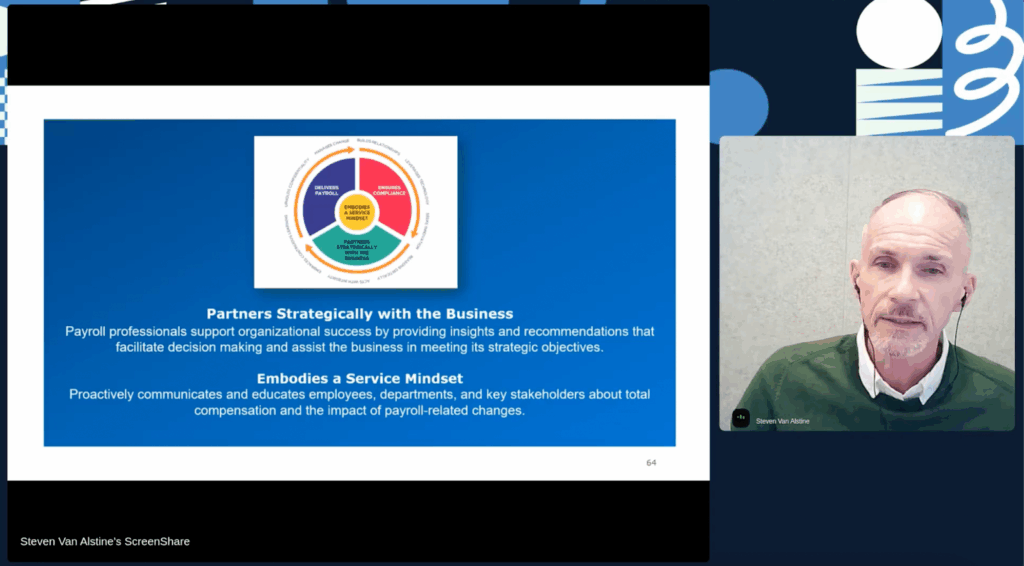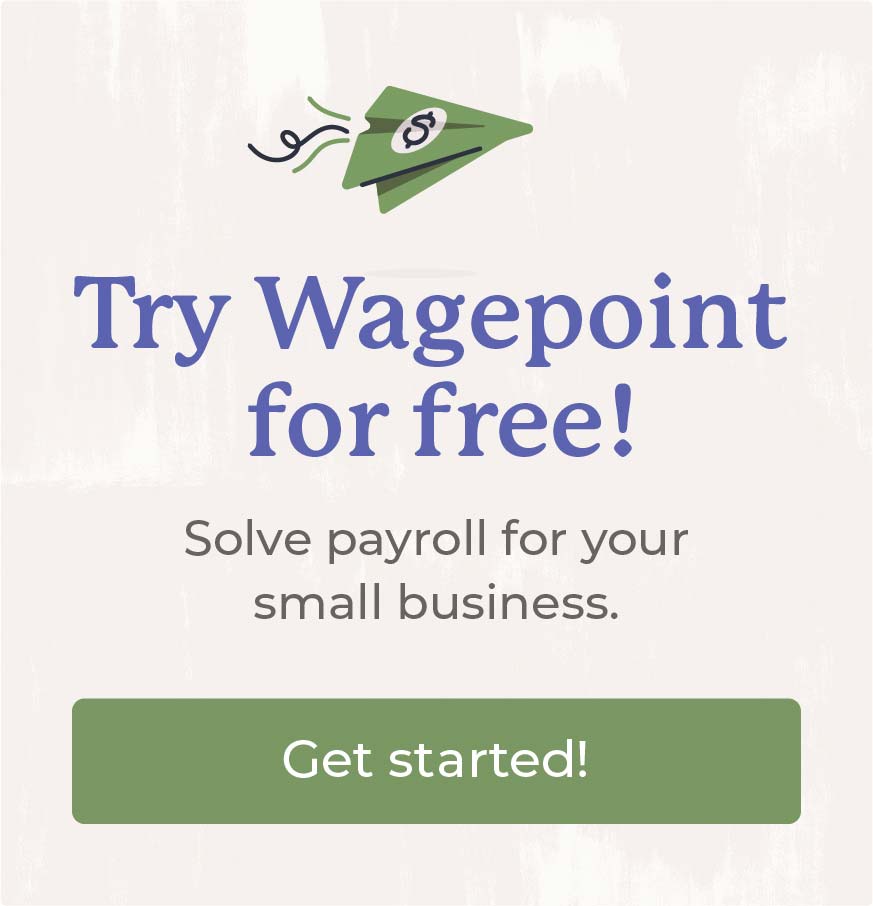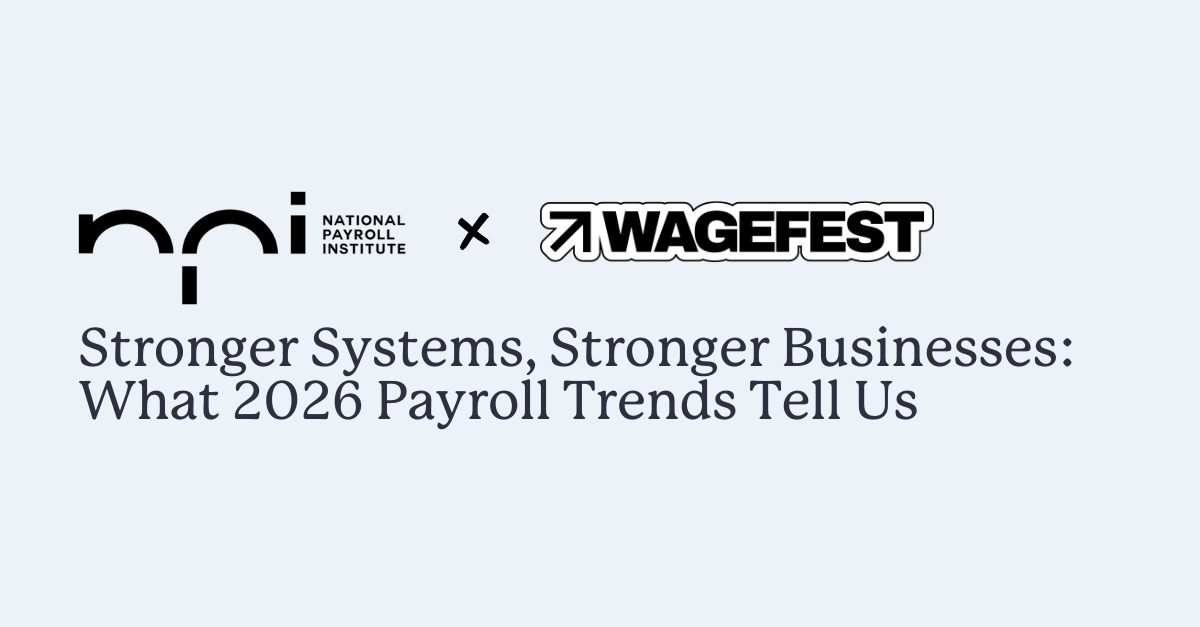Become an insider!
Get our latest payroll and small business articles sent straight to your inbox.
Having outdated payroll knowledge is like trying to submit your taxes by fax (good luck).
At Wagefest 2025, some of the brightest minds in Canadian payroll, accounting, bookkeeping, and small business came together to share what’s new and what’s worth paying attention to across the industry.
Throughout two packed days, clear themes emerged, revealing where Canadian payroll is headed next. Here are six key trends that stood out from this year’s discussions and what they mean for businesses in 2026.
1. Adaptability is a core payroll skill
Across sessions, speakers emphasized that change management and adaptability are essential for today’s small businesses and payroll professionals. From CPP2 updates to evolving reporting requirements, payroll pros are expected to navigate constant shifts.
“Payroll professionals must stay informed and be flexible, not just adapting to change, but being agents for it,” explained Steven Van Alstine, PLP, CAE, Vice President of Professional Standards and Education at the National Payroll Institute.
Steven emphasized that the best professionals aren’t just reactive to new rules, they’re adaptive. Whether it’s embracing new compliance tools, managing complex contribution tiers, or communicating change to employees, agility is what will set future-ready payroll practitioners apart.
That’s because embracing change can lead to results, even when you’re not making a full 180° pivot. Eric Termuende, Co-Founder of NoW of Work and Author of Rethink Work, shared that meaningful improvement often comes from making a simple, one-degree shift: “the smallest viable change that gets us a little bit closer to where we’re going.”
To illustrate the power of those shifts, he shared how the British cycling team went from decades of disappointment to Olympic champions by focusing on tiny, consistent improvements. Their coach introduced small “marginal gains” like teaching athletes proper handwashing to reduce illness on the road and carrying their own pillows for better sleep.
Eric also used a lighter example — one you might recognize from the cereal aisle. In the Diamond Shreddies campaign, a clever intern simply rotated a square cereal 45 degrees and boosted sales by 18%. It’s a perfect reminder that even the smallest changes can make a big impact.
Put it to action: Look for one small adjustment you can make this week to improve accuracy, efficiency, or employee experience. For example, take a few minutes to confirm employees’ contact info and pay preferences to ensure everyone is paid correctly and on time.
2. Payroll, HR and Finance are stronger together
Payroll is often viewed as a background function that quietly keeps everything running. But Steven Van Alstine made a compelling case that the next chapter of payroll is about stepping out of the background through collaboration, especially with HR and Finance.
“Payroll and other strategic areas of the business can be seen as two sides of the same coin,” Steven explained. “There are many areas of shared responsibility: integrated operations, compliance, employee experience, and risk mitigation.”
He noted that accurate payroll depends on the accuracy of HR and Finance data, from job changes and benefits to tax codes and general ledger entries. When these functions work in silos, it creates unnecessary risks like compliance errors, delayed payments, and frustrated employees.

“A collaborative approach supports workforce planning, budgeting, and data-driven decision-making,” he added. “Aligning people strategy and financial accuracy enables agile, responsive operations.”
Put it to action: Schedule regular cross-departmental check-ins between payroll, HR, and Finance. Share KPIs, key data updates, and foster a culture where payroll is recognized as a strategic partner.
3. AI can build better client experiences
In The AI Advantage: Redefining the Modern Firm, accounting professionals Eric Saumure (ZenBooks), Andrew Seguin (Seguin Financial), Heather Smith (Accounting Apps Podcast), and Danielle Ramsten (Hawkins & Co. Accounting) shared how AI is strengthening their client relationships.
The panelists agreed that tools like AI meeting assistants and transcription tools allow their teams to stay fully present during meetings. “While we’re having the meeting, we can make eye contact. We can build relationships. We can be really present,” said Heather. Afterwards, the recording and summary help teams recall decisions, follow up faster, and provide consistent service.
Eric described how his firm uses AI to personalize client interactions. He records prospect meetings and asks AI to identify each client’s unique pain points, goals, and priorities. “It helps me understand what they’re stressed about and how we can add real value,” he said. “It’s about doing exactly what the client needs and wants.” He also uses AI feedback tools to review sales calls and continuously improve how his team communicates.
AI can also help accountants and bookkeepers in their roles as advisors. Andrew uses tools like Syft Analytics and a custom GPT to train his team on how to tackle the tricky work of analyzing client financials. “It’s really hard to teach somebody how to look at a balance sheet, look at profit and loss, and provide valuable context to a client,” he said. Using AI, he translates the financial data into key wins and areas to address with clients, so they get more actionable insights and better advice.
Put it to action: Start small. Use the AI features already built into your meeting software, such as Zoom’s transcription capabilities to record and summarize client meetings so you can focus on live conversations. Review the recap to identify client challenges, goals, and priorities, then tailor your follow-up around those insights.
4. Trust is the ultimate competitive advantage
In his session, Authentic Leadership: Becoming the Leader They Need You to Be, Robert Gauvreau, FCPA, FCA LPA, Founder and CEO of Gauvreau Accounting Tax Law Advisory, shared that trust is one of the top qualities new graduates look for in their future employers.
And according to Eric Termuende, it’s also the key to future-proofing teams. In his session, Blueprint to the Future: How to Build a World-Class Team, Eric emphasized that trust is the foundation of high-performing teams – the kind that can adapt to change, handle challenges and stay resilient no matter how workplaces evolve. Research shows that teams built on trust are also 15 times more likely to be engaged at work.
So while pizza parties are fun, Eric urged leaders to “slow down to speed up”, taking the time to build a strong culture fostered through asking thoughtful questions and listening deeply.
Put it to action: Get to know who your team members are, not just what job they do. Connection fuels performance. Eric shared how Cleveland Browns coach Kevin Stefanski transformed a struggling team with a simple “4Hs” exercise, inviting players to share their heroes, heartbreaks, hopes, and history, and proving that when people feel seen, they show up stronger together.
5. A smoother year-end starts with great records (and a backup plan)
When it comes to year-end, preparation beats panic. In her session, Payroll Without the Panic: Your Year-End Compliance Roadmap, Melissa Lenos, CPB, PCP, and owner of King Business Solutions Inc., reminded attendees that stress-free year-end payroll starts with solid records and proactive habits.
“Starting with good information is always the way to have a painless year-end process,” Melissa said. That means keeping complete employee files from day one: accurate addresses, SINs, and email access to paystubs, and reconciling benefits and deductions before crunch time hits. She also urged small businesses to make use of tools like Wagepoint’s employee portal so employees can access their own pay and tax documents (like T4s) securely.

But preparation isn’t just about files and forms. Payroll continuity planning ensures that if someone on the team gets sick, takes leave, or moves on, the business doesn’t grind to a halt, especially during the busy year-end period. She encouraged small businesses to document payroll processes and train a backup who can step in at any time.
Put it to action: Audit your payroll processes before December. Check that all employee details are current, benefits are reconciled, and that your employees have access to their payroll portals (if using a software). Document your payroll workflow step by step, from time entry to T4 filing, and make sure at least one other team member knows how to run a pay cycle and complete your year-end process, whether manually or using software like Wagepoint.
6. Automation takes the grind out of payroll
The real grind for small businesses isn’t payday. It’s the clunky systems, duplicate data entry, and endless admin work that eats up hours every week.
Faye Pang, Chief Growth Officer at FreshBooks, sees that reality play out across Canada. She shared survey findings showing that 57% of small businesses cite time management as their top challenge, with one in three losing as much as six hours a week — more than 300 hours a year — to administrative tasks.
“Time is your most valuable resource,” Faye emphasized. “The goal is to get that time back so you can focus on what really drives growth: relationships, strategy, and impact.” She shared that many small businesses are still stuck in manual processes like spreadsheets, paper ledgers and “soul-sucking” repetitive data entry.
The answer lies in integration and automation. Connecting payroll to accounting and other financial tools reduces manual input, minimizes errors, and provides real-time insights into cash flow, costs, and profitability.
Faye explained, “When payroll data flows automatically into your books, every expense and deduction is recorded. You don’t have to do manual data entry. There is no duplicate input. It just works.”
Put it to action: Map out every step of your payroll workflow and flag repetitive or error-prone tasks. Look for opportunities to automate those steps, integrate payroll with the tools you use daily, and explore solutions like Wagepoint 2.0 to streamline time tracking and compliance reporting.
The Future of Payroll, Powered by Wagepoint
Jenna Poste, Vice President of Product, pulled back the curtain on Wagepoint 2.0 and how we’re building a simple, smart, and trusted platform for Canadian small businesses. We’ve already rolled out several key updates: a stronger, more scalable foundation, mandatory two-factor authentication for enhanced security, a new integration with FreshBooks and an enhanced version of our existing QuickBooks Online integration.
What’s coming next is already in motion. We’re bringing timesheets directly into payroll and launching an employee app so your team can submit hours from anywhere—desktop or mobile—with everything flowing straight into each pay run. We’re also introducing AI-powered insights that’ll flag changes, spot anomalies, and surface trends before they become issues. Catch problems early, save you time, and keep your payroll accurate.
Missed Wagefest or want to revisit your favourites? → Watch Wagefest sessions on-demand
Want to earn CPD credits?Join Canada’s Payroll Collective to access Wagefest sessions for credit. → Join Canada’s Payroll Collective











